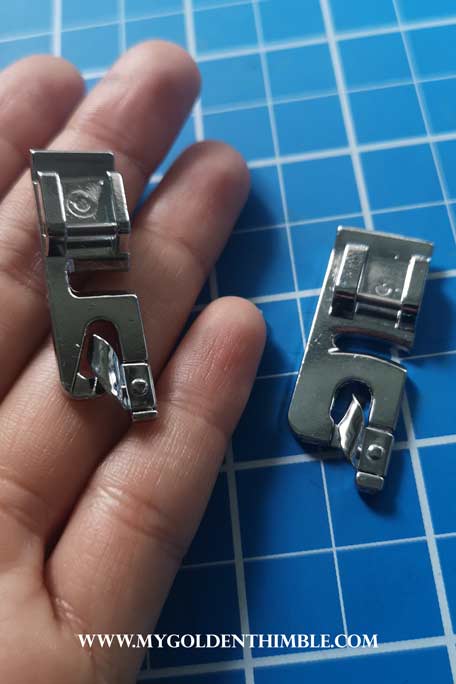How To Use A Rolled Hem Foot When Sewing With Delicate Fabrics
If you're someone who loves to sew, you already know how important it is to have the right tools to create beautiful and professional-looking garments. One such tool is the rolled hem foot, also known as the hemmer foot.

The rolled hem foot is perfect for creating narrow, neat hems on lightweight fabrics such as chiffon, silk, and organza. It's also great for creating a decorative edge on table linens and other home decor items.
How to Use a Rolled Hem Foot
Before you can start using your rolled hem foot, you'll need to make sure your sewing machine is set up correctly. Here's how:
- Attach the hemmer foot to your sewing machine. Most hemmer feet are designed to snap on to the machine, but you should check your machine's manual to be sure.
- Thread your machine with a lightweight thread that matches your fabric.
- Select a straight stitch on your machine.
- Adjust the stitch length to about 2mm. This will create a narrow, tight hem.
- Practice on a scrap piece of fabric before you start on your project.
Now that your machine is set up and ready to go, it's time to start sewing your rolled hem. Here's how:
- Begin by folding over the edge of your fabric about 1/4 inch to create a narrow hem.
- Place the folded edge of your fabric under the foot so that it just barely peeks out from the side of the foot.
- Lower the foot and begin sewing. Make sure the edge of the fabric stays lined up with the edge of the foot as you sew.
- As you sew, gently guide the fabric through the machine. Be careful not to tug or pull on the fabric, as this can cause the hem to bunch up or become uneven.
- Continue sewing until you reach the end of the hem.
- Trim any loose threads and admire your beautiful, perfectly hemmed garment!
Tips and Tricks
While using a rolled hem foot is relatively simple, there are a few tips and tricks that can help you get the best results:
- Practice on scraps first. It's always a good idea to test out a new technique on scraps before you start on your actual project. This will give you a chance to get comfortable with the process and make any necessary adjustments.
- Take it slow. Sewing a narrow hem can be tricky, so be sure to take your time and go slowly. This will help ensure that your stitches are straight and even.
- Use the right needle. When sewing with lightweight fabrics, it's important to use a needle that's appropriate for the fabric. Be sure to check your machine's manual to see which needle is recommended for the fabric you're using.
- Press your fabric. Before you start sewing, be sure to press your fabric to create a smooth, flat surface. This will help ensure that your hem looks neat and professional.
- Experiment with different fabrics. While rolled hems are typically used on lightweight, delicate fabrics, you can also use them on heavier fabrics for a decorative effect. Try experimenting with different fabrics to see what works best for you!
With a little practice and patience, using a rolled hem foot can help you create beautiful, professional-looking hems that will elevate your sewing projects to the next level. So go ahead and give it a try – you might just be surprised at what you can do!




Post a Comment for "How To Use A Rolled Hem Foot When Sewing With Delicate Fabrics"